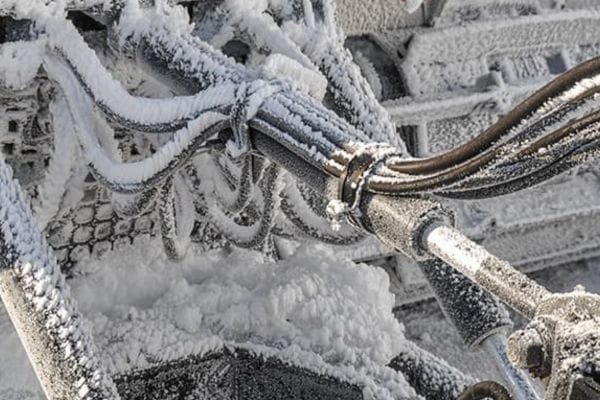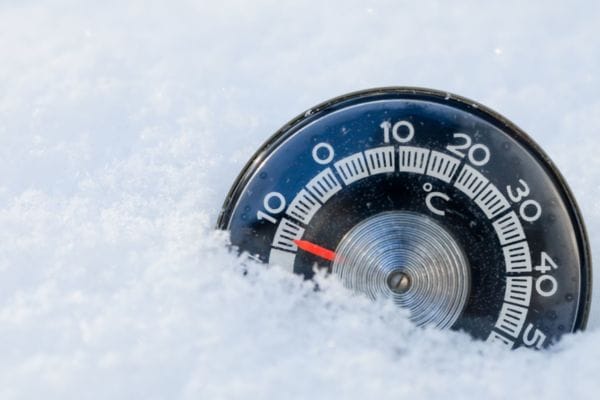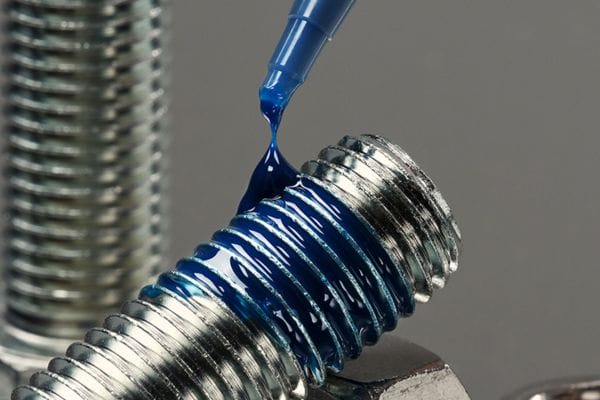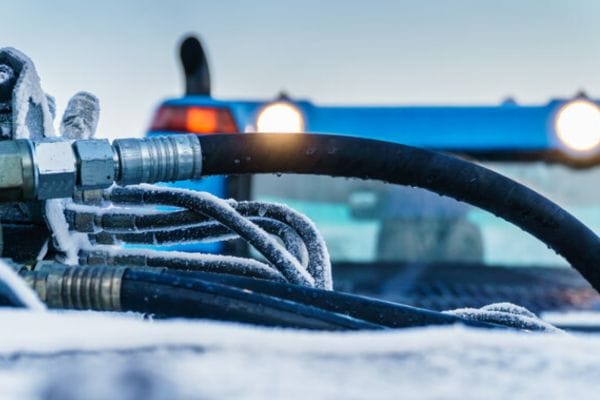When hydraulic systems are exposed to freezing temperatures, the risk of issues such as leaks, pressure imbalances, and even system failures increases significantly. Cold weather can cause hydraulic fluids to thicken, fittings to contract, and seals to weaken, creating vulnerabilities that can lead to costly breakdowns and downtime. In this post, we’ll explore actionable tips and best practices for maintaining hydraulic fittings in freezing temperatures.
Understanding the Impact of Freezing Temperatures on Hydraulic Fittings
Hydraulic fittings are vital components of hydraulic systems, responsible for securing and sealing connections between hoses, tubes, and various components. However, freezing temperatures introduce unique challenges that can significantly affect the performance and durability of these fittings. To maintain system efficiency and avoid costly failures, it’s essential to understand how cold weather affects the materials and operation of hydraulic fittings.

Material Contraction and Brittleness
When exposed to freezing temperatures, the materials used in hydraulic fittings, such as steel, brass, and aluminum, undergo contraction. This contraction is due to the decrease in temperature, causing the metal to shrink slightly. While this change may seem minimal, it can have serious implications for hydraulic systems. Fittings that were properly sealed at warmer temperatures may lose their tight seal as the material contracts, leading to leaks or system inefficiencies. Additionally, some metals, particularly aluminum and certain grades of steel, become more brittle in extreme cold. Brittleness increases the likelihood of cracking or breaking under stress, especially in high-pressure systems. Brass, though more resistant to brittleness than steel or aluminum, can also experience micro-cracking over time when repeatedly exposed to freezing temperatures. Therefore, material selection plays a critical role in determining the resilience of hydraulic fittings in cold climates.
Hydraulic Fluid Viscosity Changes
Cold weather has a profound effect on hydraulic fluid behavior, particularly its viscosity. Viscosity refers to the thickness or resistance to the flow of the fluid, and as temperatures drop, hydraulic fluids tend to become thicker. This increase in viscosity means that the fluid flows more slowly through the system, which can result in higher pressure within the hydraulic lines and fittings. Higher viscosity also increases the resistance the fluid encounters when passing through small passages, leading to increased strain on fittings and seals. This additional strain can cause fittings to loosen or even fail, particularly if they are not rated for use in such conditions. Furthermore, thicker fluids reduce system efficiency, requiring more energy to pump the fluid through the system and potentially leading to slower response times. Choosing a hydraulic fluid that is specifically formulated for cold weather can help mitigate these issues, ensuring that the system continues to operate smoothly and reducing the strain on fittings.
Thermal Expansion and Contraction
Hydraulic systems are constantly subject to thermal expansion and contraction due to fluctuating temperatures. In environments where temperatures drop significantly, fittings and other components expand and contract as the system heats up during operation and cools down when idle. This constant cycle of expansion and contraction creates stress on hydraulic fittings, especially at connection points where even minor shifts can weaken the seal. Over time, this repeated thermal stress can lead to leaks, cracks, and system inefficiencies. The effects are compounded when the system is subjected to extreme temperature swings, making it crucial to choose fittings that are designed to withstand such conditions. In addition, regular inspection and maintenance are necessary to ensure that the integrity of the fittings is not compromised over time.
Condensation and Freezing
One of the less obvious but equally damaging effects of cold weather on hydraulic systems is the formation of condensation within the system. When hydraulic systems operate in fluctuating temperatures, moisture can accumulate inside the lines and fittings. As temperatures drop, this moisture can freeze, leading to blockages, restricted fluid flow, and even damage to the internal components of the fittings. Ice formation within fittings can cause them to expand and crack, leading to catastrophic failure in some cases. Furthermore, the freezing and thawing cycle can cause water to enter small cracks and exacerbate existing damage. To prevent this, it’s important to minimize the amount of moisture that enters the system by ensuring all seals are intact, regularly draining any accumulated water from the system, and potentially using desiccant breathers or other moisture-preventing technologies.
Choosing the Right Fittings for Cold Environments
When operating hydraulic systems in cold environments, the right choice of fittings becomes essential to maintain efficiency and prevent breakdowns. Freezing temperatures place unique stresses on hydraulic fittings, and selecting materials and designs specifically engineered for such conditions is critical. Below, we’ll explore cold-resistant materials, the importance of proper sealing mechanisms, and pressure rating considerations to help you choose the right fittings for cold-weather applications.

Cold-Resistant Materials
One of the most important factors in selecting hydraulic fittings for freezing temperatures is the material used. Cold-resistant materials are crucial because certain metals can become brittle or lose strength when exposed to extreme cold. For cold environments, stainless steel is an excellent choice due to its high resistance to corrosion, strength, and durability even in low temperatures. Stainless steel maintains its integrity under thermal stress, which makes it less likely to crack or fail due to brittleness.
Coated fittings, such as those with zinc or nickel plating, are another viable option for cold weather. These coatings provide additional corrosion resistance, which can be especially beneficial in environments where the temperature fluctuates or where exposure to moisture is a concern. Coated fittings also provide an extra layer of protection against the physical wear and tear that can result from the contraction and expansion of metal under freezing conditions.
For applications where weight is a concern, composite or polymer-based fittings are also available. While these materials are generally less strong than metal, certain composites can perform well in cold environments and offer excellent resistance to corrosion. However, the specific application and system requirements must be carefully considered when selecting composite fittings for cold climates.
Sealing Mechanisms
A critical aspect of hydraulic fittings in cold environments is their ability to maintain a proper seal despite the contraction of materials caused by freezing temperatures. When metal fittings contract in the cold, the risk of leaks increases significantly, as even slight movements can compromise the seal. Therefore, selecting fittings with effective sealing mechanisms is essential for ensuring leak-free operation in freezing conditions.
O-ring face seals (ORFS) and elastomeric seals are highly effective in cold environments due to their flexibility and ability to maintain a tight seal despite temperature changes. O-rings made from cold-resistant materials such as fluorocarbon or nitrile are commonly used in fittings for cold-weather applications because they remain flexible and do not harden as much as standard O-rings. Additionally, the use of bonded seals that combine metal and elastomeric materials can provide added reliability and durability in maintaining a seal, even under thermal contraction and expansion.
Furthermore, fittings with conical or tapered threads are ideal for high-pressure applications in cold environments because they provide an additional mechanical sealing action that complements the elastomeric seals. The combination of mechanical and elastomeric seals ensures that fittings remain leak-proof even when subjected to freezing conditions.

Pressure Rating Considerations
Freezing temperatures can have a significant impact on the pressure within hydraulic systems. As hydraulic fluids thicken in the cold, the pressure within the system increases, which places additional stress on the fittings. This increase in pressure can cause fittings that are not rated for cold conditions to fail. Therefore, it is crucial to understand how pressure ratings may change in freezing conditions and to choose fittings that are appropriately rated for both normal and cold-weather operating pressures.
Fittings with higher pressure ratings than normally required are often recommended for systems that will operate in freezing temperatures. This added buffer ensures that the fittings can handle the increased pressure without risking failure. Additionally, fittings that are specifically rated for sub-zero temperatures are designed to withstand both the mechanical stresses of contraction and the increased system pressure caused by thicker fluids.
To further ensure safety and system integrity, it is important to regularly inspect and monitor the pressure within the hydraulic system, especially during extreme cold spells. Selecting pressure-rated fittings and proactively monitoring pressure changes can help prevent unexpected system failures and leaks.
Pre-Winter Inspection and Preparation
As freezing temperatures approach, it becomes increasingly important to prepare hydraulic systems to withstand the challenges of cold weather. Pre-winter inspection and preparation ensure that hydraulic fittings and other components are ready to handle the unique stresses brought on by freezing temperatures.
Inspecting Fittings for Damage
Before the onset of winter, a thorough inspection of all hydraulic fittings is essential to identify any cracks, leaks, or wear that could compromise the system in freezing temperatures. Cold weather exacerbates existing vulnerabilities, so catching issues early can prevent costly breakdowns and system failures.
Begin by visually inspecting all fittings, joints, and connection points for signs of wear or damage. Look for any visible cracks, especially in fittings made of materials prone to brittleness in cold conditions, such as aluminum. Pay close attention to areas where fittings connect to hoses or pipes, as these points are more susceptible to wear due to movement and pressure fluctuations. Additionally, check for signs of corrosion, which can weaken the integrity of the fittings and lead to leaks.
During the inspection, use a wrench to test the fittings for any looseness. Even if no visible damage is present, a fitting that is not securely fastened can lead to leaks or even failure when exposed to the contraction caused by cold temperatures. If any fittings show signs of significant wear, corrosion, or damage, they should be replaced immediately before the cold season begins.

Checking for Proper Torque
Ensuring that all hydraulic fittings are properly torqued is a critical step in preparing for freezing temperatures. As materials contract in cold weather, fittings can loosen if not tightened to the appropriate specifications, leading to leaks and inefficiencies in the system.
Start by consulting the manufacturer’s torque specifications for each type of fitting in your system. Using a calibrated torque wrench, go through all the fittings and ensure that they are tightened to the correct torque value. Be cautious not to over-torque the fittings, as this can cause damage to threads or distort the fitting, leading to future leaks. If torque specifications are not available, consult with a hydraulic specialist to ensure proper tightening without causing damage.
Regularly checking the torque on fittings throughout the winter is also a good practice. Cold weather causes metal to expand and contract, which can cause fittings to loosen over time. By ensuring all connections are properly tightened, you can mitigate the risk of leaks due to temperature-induced material contraction.
System Insulation
Insulating hydraulic lines and fittings is a key preventative measure for protecting systems against freezing temperatures. Insulation helps maintain a more consistent temperature within the system, reducing the risk of fluid thickening, condensation buildup, and ice formation. Proper insulation can also prevent the hydraulic fluid from cooling too quickly, ensuring that the system remains operational even in extreme cold.
There are several options for insulating hydraulic systems, depending on the specific application and environment. Common insulation materials include foam sleeves, pipe wraps, and thermal blankets. These materials should be applied around hydraulic lines, fittings, and other vulnerable components to prevent direct exposure to cold air. For systems that operate in extremely cold environments, consider using heat trace cables in conjunction with insulation. These cables provide a controlled heat source that prevents freezing by maintaining the temperature of the fluid within the hydraulic lines.
Insulating your hydraulic system not only helps protect against freezing but also improves overall system efficiency by reducing the energy required to maintain proper fluid viscosity.
Lubrication and Anti-Corrosion Coatings
Cold temperatures can cause hydraulic fittings to seize, particularly if they have not been properly lubricated. Applying appropriate lubrication before winter is crucial to ensuring that fittings continue to operate smoothly in freezing conditions. Use cold-weather lubricants designed to withstand low temperatures, as standard lubricants may become too thick to be effective in the cold.
In addition to lubrication, applying anti-corrosion coatings to your hydraulic fittings is an important preventative measure, especially for systems exposed to moisture, snow, or ice. Corrosion weakens fittings over time, leading to leaks, cracks, and system failures. Anti-corrosion coatings provide a protective barrier that prevents rust and degradation caused by exposure to harsh winter elements. Zinc or nickel plating, as well as specialized anti-corrosion sprays, can be effective at safeguarding fittings from the corrosive effects of moisture and road salt.
Replacing Worn or Corroded Fittings
Proactively replacing worn or corroded fittings before winter is one of the most effective ways to prevent system failures during cold weather. Fittings that are already showing signs of wear or corrosion are more susceptible to damage when exposed to freezing temperatures. Cracked or leaking fittings, in particular, should be replaced immediately to avoid further deterioration during the winter months.
When replacing hydraulic fittings, it’s important to choose cold-resistant materials and ensure that the new fittings are rated for the temperatures and pressures they will experience during winter operations. Replacing faulty fittings before they fail ensures that your system remains operational and avoids costly repairs and downtime caused by unexpected failures.
Conclusion
In summary, preparing your hydraulic systems for freezing temperatures is essential to ensure reliable performance and prevent costly failures. Don’t wait for freezing temperatures to catch you off guard. Start by conducting a thorough inspection, apply necessary protective measures, and replace any damaged fittings before they fail. By taking these proactive steps, you can protect your hydraulic systems from winter’s worst and ensure they perform reliably when you need them most.
FAQ
What materials are best for hydraulic fittings in cold weather?
Cold-resistant materials such as stainless steel and coated fittings (e.g., zinc or nickel-plated) are ideal for cold environments due to their durability and resistance to brittleness.
How does cold weather affect hydraulic fluid?
Freezing temperatures can increase hydraulic fluid viscosity, making it thicker and harder to flow, which can put extra pressure on the system and fittings.
Why is it important to check fittings for proper torque in winter?
Cold temperatures cause materials to contract, which can loosen fittings. Checking and adjusting torque ensures that fittings remain secure and leak-free.
How can I prevent my hydraulic fittings from freezing?
Insulating hydraulic lines and fittings, as well as using cold-weather lubricants, can help prevent freezing and maintain system efficiency in winter.
When should I replace hydraulic fittings before winter?
Any fittings showing signs of wear, cracks, or corrosion should be replaced before winter to avoid failures during freezing temperatures.
Can I use standard hydraulic seals in cold weather?
It’s recommended to use cold-resistant seals, such as those made from fluorocarbon or nitrile, as standard seals may become brittle and lose effectiveness in freezing conditions.







